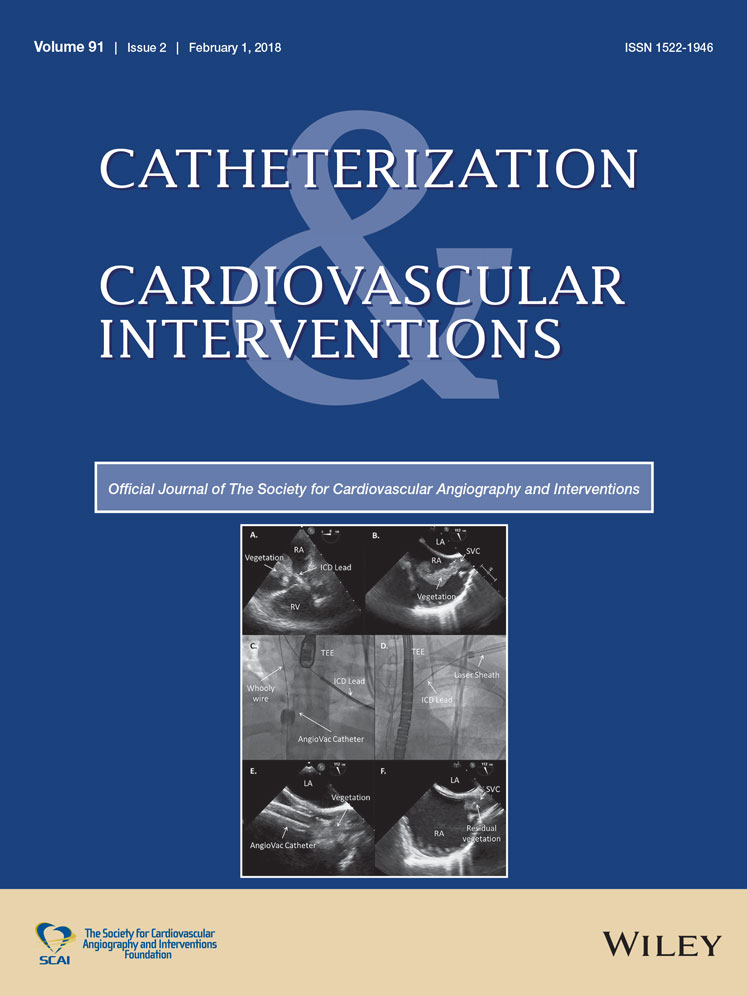Incidence and outcome of infective endocarditis following percutaneous versus surgical pulmonary valve replacement
Abstract
Objectives
To provide a comparison of the outcome of infective endocarditis (IE) in patients undergoing transcatheter pulmonary valve replacement (TPVR) versus surgical pulmonary valve replacement (SPVR).
Background
Although TPVR is thought to be associated with a higher risk of IE than SPVR, there is paucity of data to support this.
Methods
Patients who underwent TPVR or SPVR at UCLA between October 2010 and September 2016 were included and retrospectively analyzed.
Results
Three hundred forty-two patients underwent PVR at UCLA including 134 SPVR and 208 TPVR. Patients undergoing TPVR were more likely to have had a history of endocarditis than those undergoing SPVR (5.3% vs. 0.7%, P = 0.03) and a right ventricle to pulmonary artery (RV to PA) conduit (37% vs. 17%, P = 0.0001). Two SPVR and seven TPVR patients developed IE with a 4-year freedom from endocarditis of 94.0% in the SPVR versus 84% in the TPVR group (P = 0.13). In patients who underwent TPVR and developed endocarditis, the mean gradient across the RVOT prior to intervention was higher (28.1 ± 4.5 vs. 17.4 ± 0.6 mmHg, P = 0.02) and were more likely to have a conduit (71% vs. 36%, P = 0.049).
Conclusions
In this study, patients undergoing TPVR were not at a higher risk of IE than patients undergoing SPVR. TPVR patients were more likely to have had a prior history of IE and RV-PA conduit. The patients at highest risk were those with stenotic RV to PA conduits who were treated with TPVR.
CONFLICTS OF INTEREST
Nothing to report.




